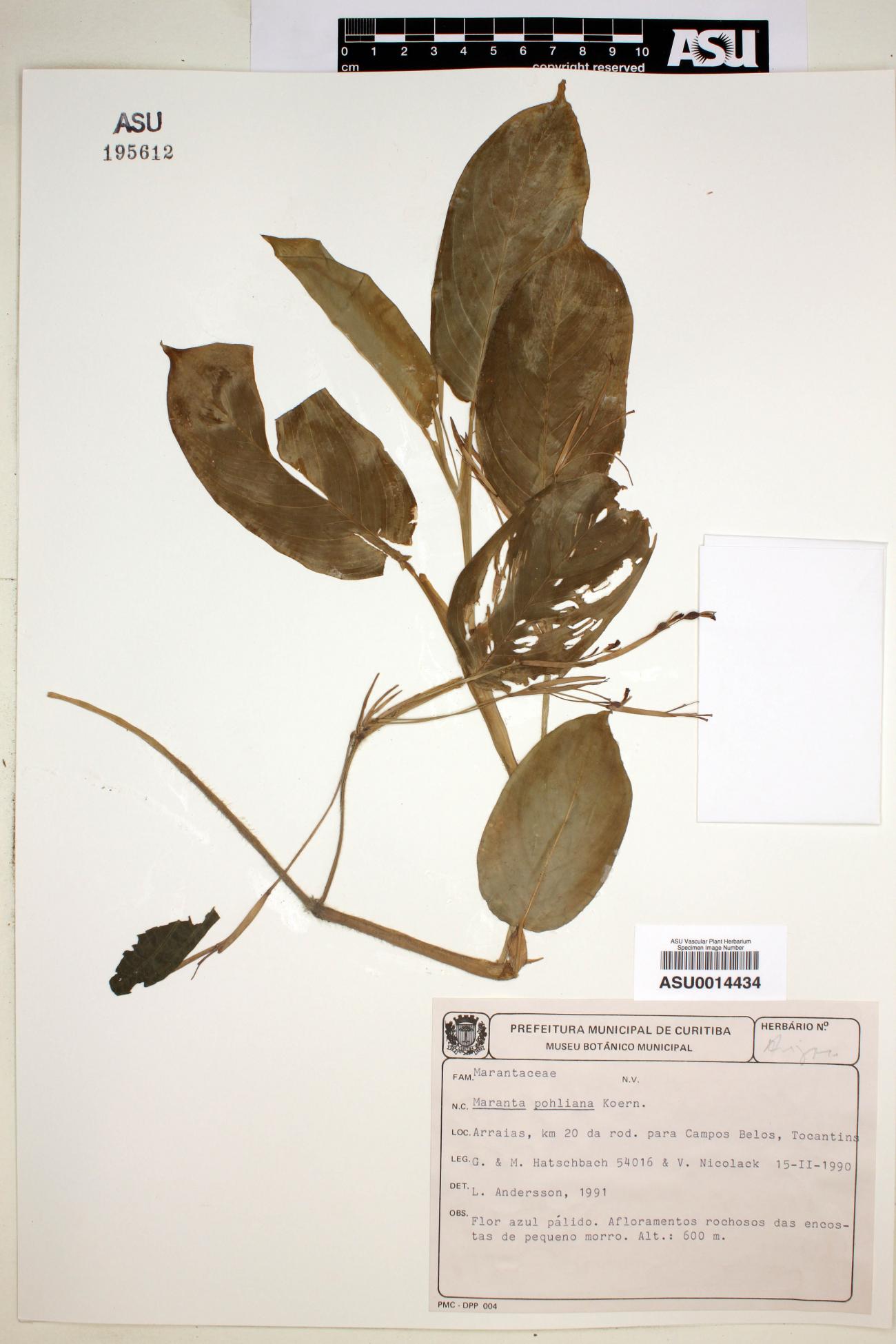Maranta
|
Family: Marantaceae |
Plants terrestrial, prostrate, scandent, or upright, usually dying back to rhizome during dry season, 0.1--1.5(--1.8) m. Rhizomes occasionally swollen, storing starch. Stems branched or unbranched with basal and cauline leaves to highly branched above elongate, cane-like stem (internode) with few or no basal leaves. Leaves homotropic [rarely antitropic]; sheath usually auriculate, not spongy; blade [patterned] plain green, ovate to elliptic. Inflorescences usually 2--several per shoot, spikel-like, unbranched; bracts persistent, subtending 2--6 pedicellate flower pairs, herbaceous; prophylls keeled, membranous; secondary bracts absent; bracteoles usually absent. Flowers self-fertilizing [or outcrossing], corolla white, staminodes white [purple]; sepals persistent in fruit, more than 5 mm, herbaceous; corolla tube [4--]12--14 mm, corolla lobes unequal; outer staminodes 2, petal-like; callose staminode apex usually petal-like; cucullate staminode with 1 appendage, medial [subterminal], flaplike [fingerlike]; stylar movement in single plane; style unappendaged. Fruits capsules, 1-seeded, obliquely ellipsoid, pericarp relatively thin, dehiscent. Seeds brown, ellipsoid, rugose; perisperm canal 1, distally branched; aril conspicuous, white. |

